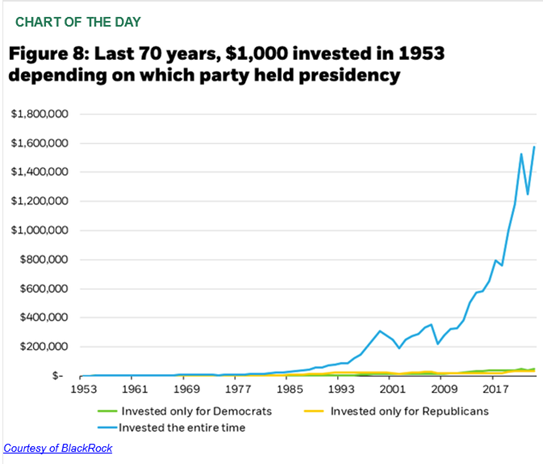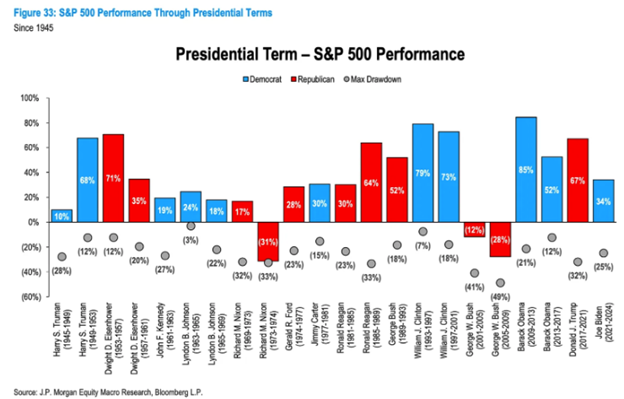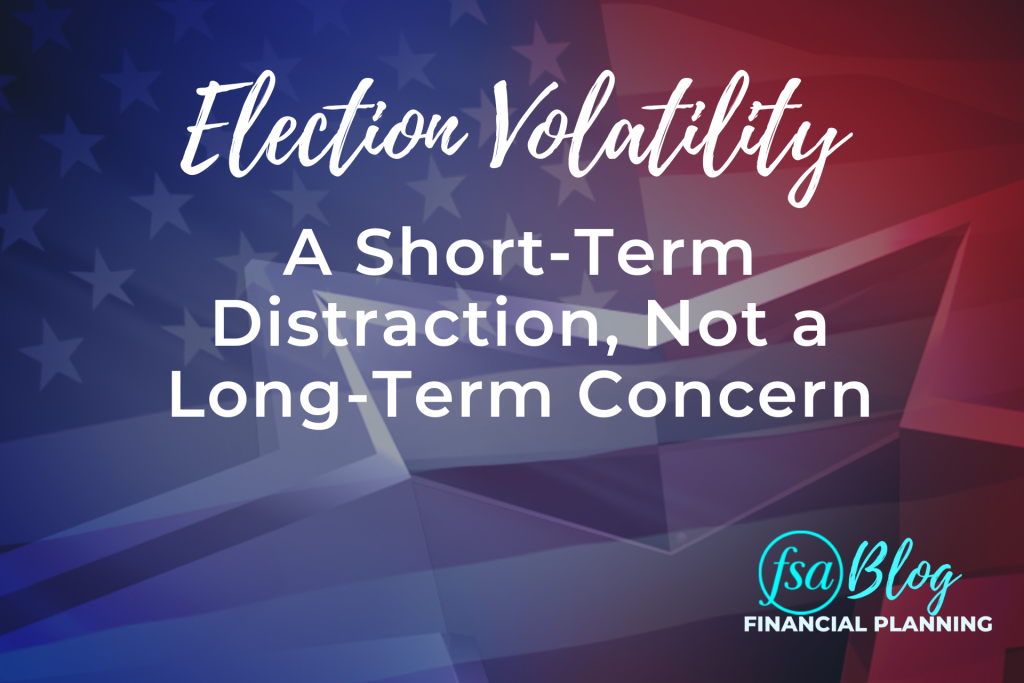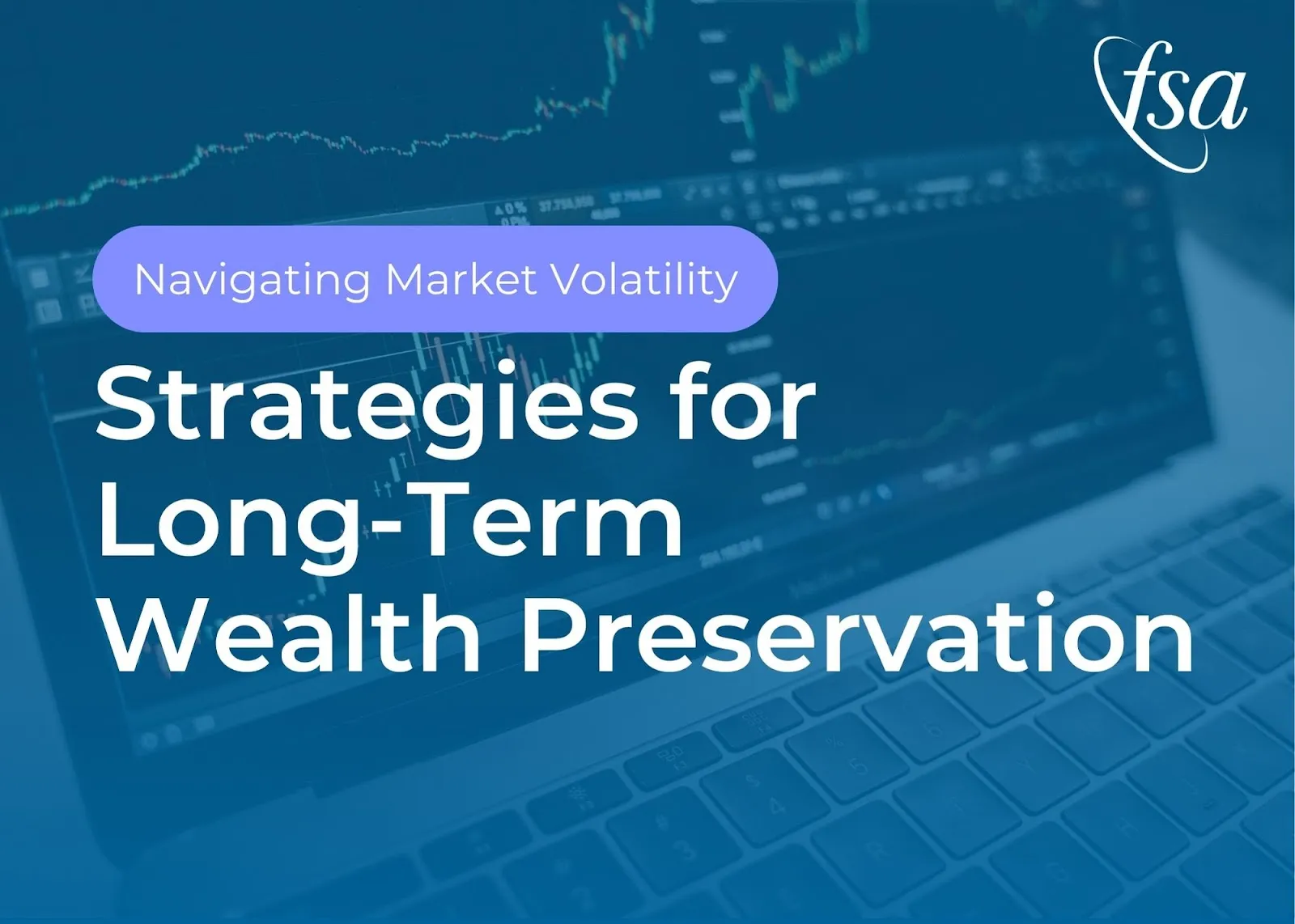With the election right around the corner, it is not uncommon for investors to be a bit spooked about what may lie ahead. Here’s the secret: Although there may be a turbulent month or two pre and post November 5, the stock market really doesn’t care who is in the Oval Office. Within this short post, we’ll provide several charts (including the one below) to show that the color of the White House has no real significance. Elections might stir up some short-term market swings, but they don’t really change the big picture for stocks.
What drives the stock market long term are things like company earnings, interest rates, and overall economic conditions, not who’s in office. People often overestimate how much elections matter to their investments but fail to see that central banks, like the Federal Reserve, have more influence on the market because they control interest rates and other financial policies. Businesses also adapt to new rules and policies, finding ways to stay profitable. In the long run, the stock market’s growth comes from factors like innovation, global trends, and consumer demand, which all go beyond politics. So, while you might see some short-term reactions around election time, the market’s bigger drivers remain the same.
The chart below shows if you invested the entire time (regardless of red or blue in office) for the 70-year period beginning in 1953, your $1,000 would be ~$1.6 million versus well under $200,000 if you decided to only invest when a certain party held control of the house on Pennsylvania Avenue in Washington, D.C. Making investment decisions based on politics and not sound advice could be the difference between retiring early instead of working several extra years or buying a home or any other financial goal that you could use your invested funds for.

The next graphic is a piece that comes from JP Morgan. The graph shows the gain (or loss) at the end of each four-year term along with the maximum draw down of the S&P 500 which typically reaches double digits no matter the political affiliation of the sitting president. Major market declines were recorded during periods of both Democratic and Republican presidencies, which only further emphasizes the point that political party alone does not dictate market performance. As stated earlier, that is where fundamentals are the driving force of the markets. The graphic underscores that while markets tend to grow over time, they are also subject to periods of volatility during any administration.

On the topic of volatility, it would be out of character if we didn’t bring up the FSA Safety Net®. Here at FSA, one of our mottos is, “You win by not losing.” We focus our efforts on protecting portfolios from sustained downward trends. Should these turbulent times arise during this election cycle, you can rest a little easier knowing that we will use our safety net strategy to help preserve gains if price trends reverse.
In short, the coming months may bring some excitement (or volatility) to the markets, but rest assured the FSA team is paying attention.
If there’s a topic you’d like us to cover in our next blog, feel free to email us at [email protected].
And as always, if there have been any changes in your life, be sure to inform your advisor so we can adjust our management of your investments accordingly.
FSA’s current written Disclosure Brochure and Privacy Notice discussing our current advisory services and fees is also available at https://fsawealthpartners.com/disclosures/ or by calling 301-949-7300.




